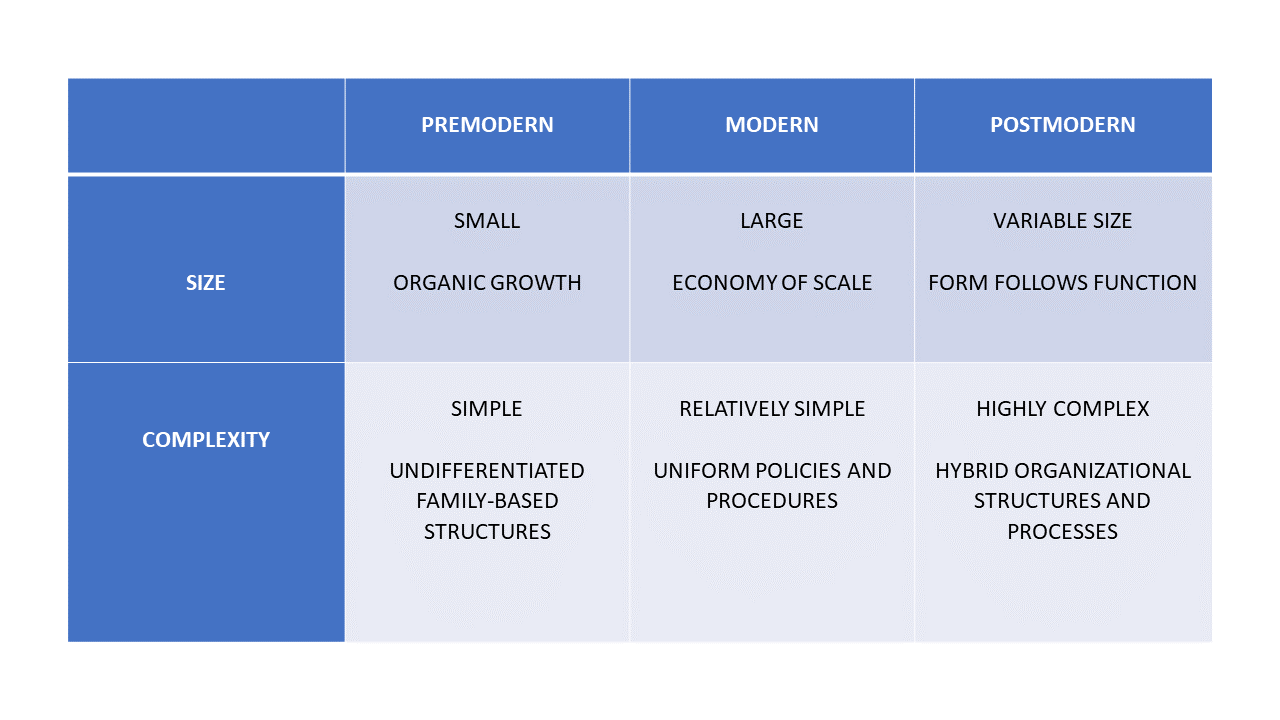
In essence, I am proposing that major shifts have occurred in each of these dimensions as our world has moved from a premodern era (based in the extraction of natural resources and craft work) to a modern era (industrial and human-service based). Shifts of a similar magnitude are now occurring throughout the world (and particularly in the Western world) as we move into a postmodern world.
Size and Complexity
We find in the premodern era the dominance of simple organizational structures (usually based in the family unit) and an emphasis on gradual growth. By contrast, in the modern era, emphasis is placed not on the process of growth itself nor on the gradual expansion in organizational capacity, but rather on the outcome of growth, i.e. large size and an accompanying increase in organizational efficiency and market share. Organizational structures are no longer simple in the modern era. However, these structures are usually uniform within and between organizations (being bureaucratic in nature). Furthermore, these structures are compatible with hierarchically based forms of leadership and authority, and with the highly energy-intensive and technologically driven processes of mass production.
In the movement to a postmodern era, emphasis tends to be placed not on growth and largeness, but instead on keeping things small or of moderate size. Structures are neither simple nor uniform—despite the emphasis on smallness. Rather, fragmentation and inconsistency typify the postmodern organization. It is comprised of differing organizational structures, policies and procedures. While many people view this fragmentation and inconsistency as transitional in nature—between the modern era and some new, as yet undetermined, era—there is reason to believe that this will be a much longer- term condition of postmodern organizations.









